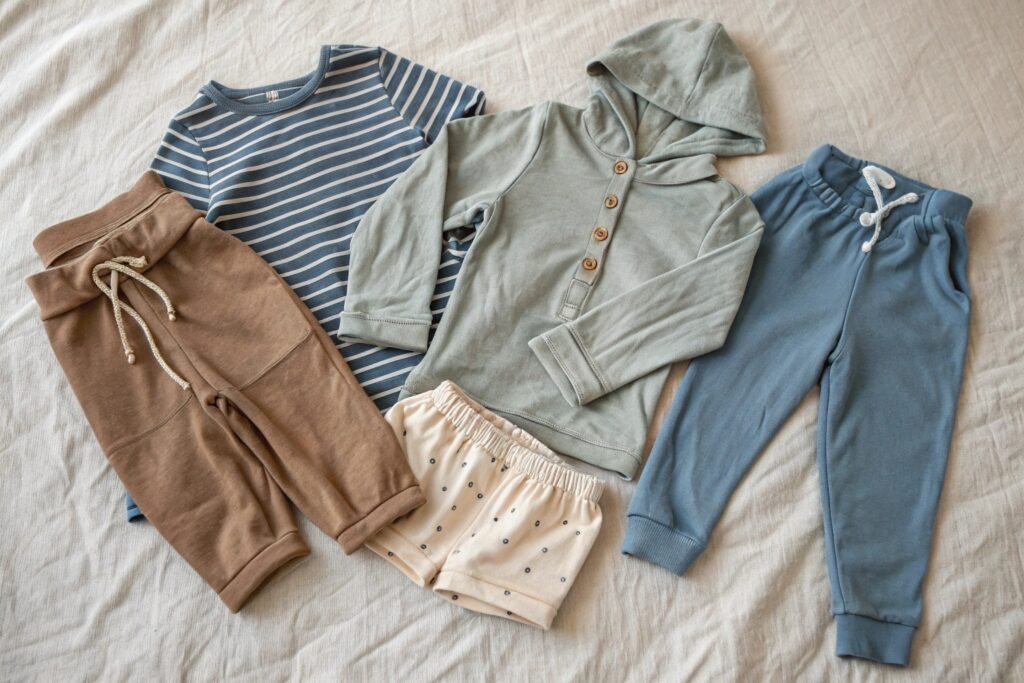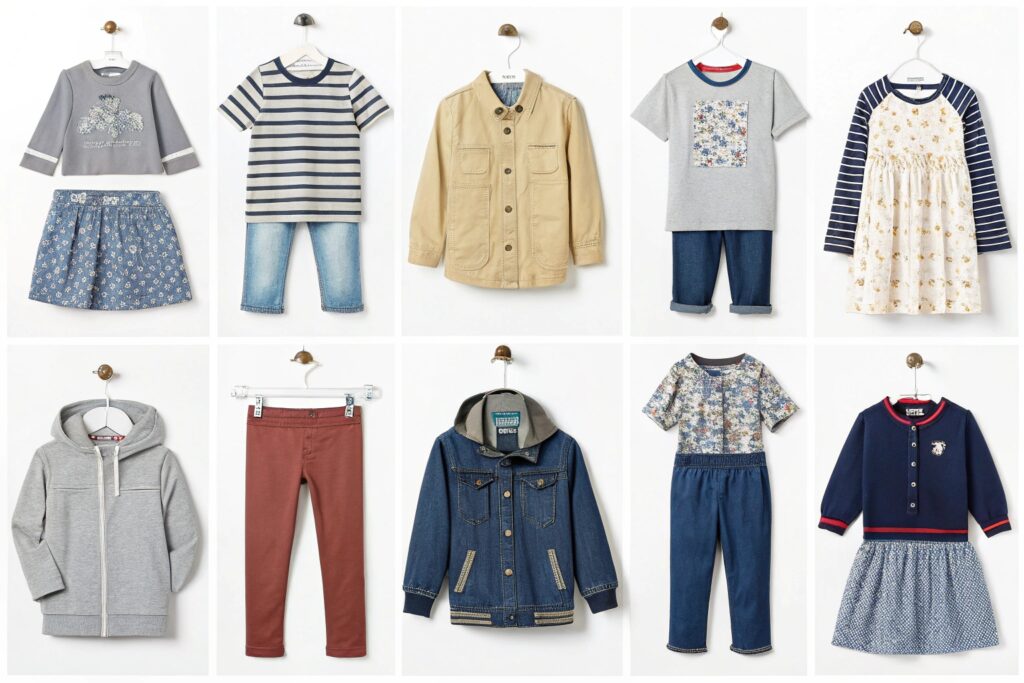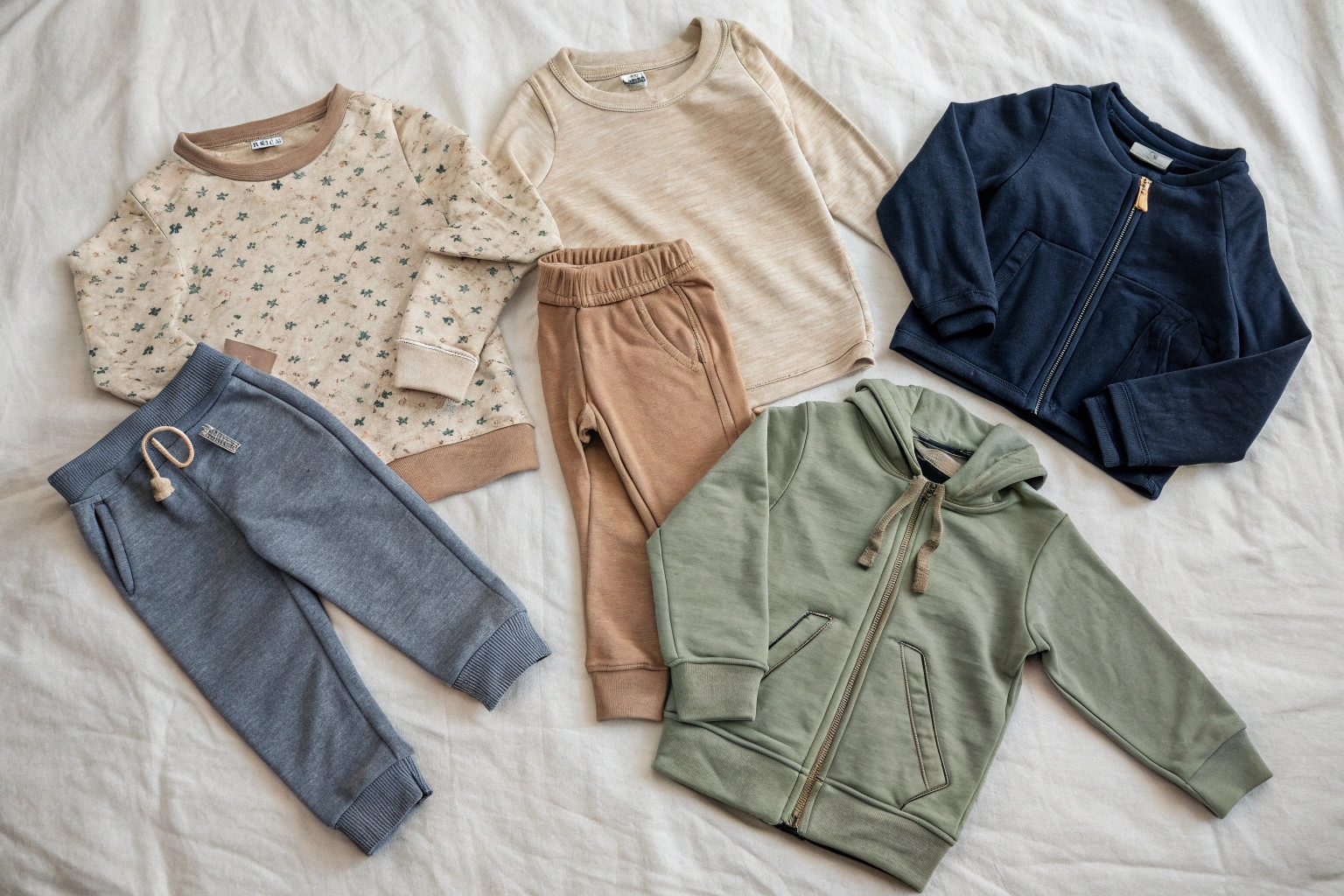Capsule wardrobes save space, reduce stress, and simplify decision-making—but only if they’re built on the right foundation.
A kidswear capsule needs versatile, durable, and mixable staples that work across occasions, weather, and growth stages.
In my years helping brands build top-selling capsule lines, I’ve learned that success isn’t about quantity—it’s about selecting the right few pieces. Here’s how to do it for children’s wardrobes.
What does every capsule wardrobe need?
Too many clothes can actually make dressing harder. Capsules eliminate clutter by focusing on function and flexibility.
Every capsule wardrobe needs a few go-to tops, bottoms, layers, and wildcard pieces—all chosen to work together in multiple combinations.

What Core Categories Should Be Included in Any Kids Capsule?
No matter the season or style, a functional kidswear capsule includes:
| Category | Essential Pieces | Purpose |
|---|---|---|
| Tops | 2–3 T-shirts or long-sleeves | Everyday wear, base layering |
| Bottoms | 2 joggers, leggings, or jeans | Comfort, durability |
| Layer | 1 hoodie, cardigan, or zip-up | Temperature control |
| Versatile | 1 dress, tunic, or romper | Double-duty for events or layering |
| Undergarments | Basic base layers, briefs, socks | Daily function |
We help brands select these core pieces using neutral palettes, functional fits, and coordinated designs to ensure every item is worn on repeat.
How Can You Adapt These Staples for Different Seasons?
Simple—swap the fabric, not the formula:
- Summer: Lightweight cotton, short sleeves, biker shorts
- Winter: Brushed fleece, thermal leggings, long-sleeves
- Midseason: Layerable knits, zip hoodies, joggers
Capsule logic stays the same—the materials shift to match the weather.
What is a basic capsule wardrobe for kids?
You don’t need 20+ items. In fact, a basic capsule is often the most effective—if it’s designed with mixability in mind.
A basic kidswear capsule includes around 7–10 pieces that can create 14 or more outfits through mix-and-match styling.

What’s a Proven 7-Piece Kidswear Capsule Layout?
Here’s our top-selling structure, based on years of feedback:
- 2 Tops – One solid, one print
- 2 Bottoms – One denim, one stretchy or jogger style
- 1 Layer – Hoodie, cardigan, or vest
- 1 Versatile Piece – Dress, tunic, or romper
- 1 Long Sleeve – Base layer or solo wear
This layout creates at least 14 unique outfit combos. Add a few accessories, and you double that number.
We help brands bundle these pieces in retail kits labeled things like:
- “Everyday Essentials”
- “Mix & Match Set”
- “From Playground to Picture Day”
These kits simplify shopping and boost perceived value.
What Makes a Capsule “Basic” But Not Boring?
It’s all about detail. Even in minimal collections, we use:
- Textured knits
- Patterned trims
- Coordinated color stories
These subtle elements make basics feel intentional—and help kids feel styled without effort.
What are the 37 items in a capsule wardrobe?
The number 37 often refers to adult capsule wardrobes—but what can we learn from that number in kidswear?
While kids don’t need 37 items, the logic behind it—seasonal versatility, core layering, and functional diversity—still applies.

How Can the 37-Item Logic Be Adapted for Kids?
Instead of 37, aim for around 20–25 total pieces across a full season (including undergarments). This provides a complete rotation without overstock.
Example seasonal breakdown:
| Category | Quantity |
|---|---|
| Tops | 5–6 |
| Bottoms | 4–5 |
| Layers | 3–4 |
| One-Pieces | 2–3 |
| Undergarments | 6–7 sets |
| Accessories | 2–3 |
This ensures you have enough for:
- School days
- Weekend activities
- Weather changes
- Growth spurts
We help brands design size-flexible pieces (adjustable waists, extendable cuffs) to maximize longevity within this count.
Should Brands Market Capsule Collections Based on Quantity?
Sometimes, yes. Customers love clarity.
Consider naming your bundles:
- “14-Day Wardrobe”
- “One Month, One Rack”
- “Complete Week Kit”
Clarity sells—especially to busy parents looking for low-effort solutions.
What is the 5 capsule wardrobe rule?
This rule simplifies shopping by suggesting 5 rotating capsules: work, casual, event, active, and seasonal.
For kids, the 5-capsule rule becomes 5 mini wardrobes: school, play, dress-up, activewear, and layering pieces.

What Are the Five Key Capsules in a Full Kidswear System?
Here’s how we guide our clients in structuring multi-capsule lines:
- Schoolwear Capsule
- Polos, chinos, layering knits
- Play Capsule
- Soft tees, joggers, leggings
- Dress-Up Capsule
- Tunics, shirts, one nice layering item
- Active Capsule
- Stretch shorts, mesh tops, zip-ups
- Seasonal Capsule
- Thermals, raincoats, fleece, or UV gear
Each capsule can be built using just 5–7 pieces. Together, they give kids everything they need without overloading the closet.
How Can Brands or Retailers Use This Rule in Marketing?
Create distinct product pages or kits for each mini capsule:
- “Play All Day Set”
- “School Starter Capsule”
- “Weekend Wear Kit”
We even offer packaging with printed outfit ideas for each theme—helping parents visualize the use cases.
Capsule marketing works best when it’s relatable, structured, and aligned with family routines.
Conclusion
Staples are the heart of every kidswear capsule. By choosing the right core pieces, fit strategies, and mixable styles, you create value parents trust and kids love. At Fumao Clothing, we help brands build capsules that are simple, scalable, and smart—one versatile piece at a time.










